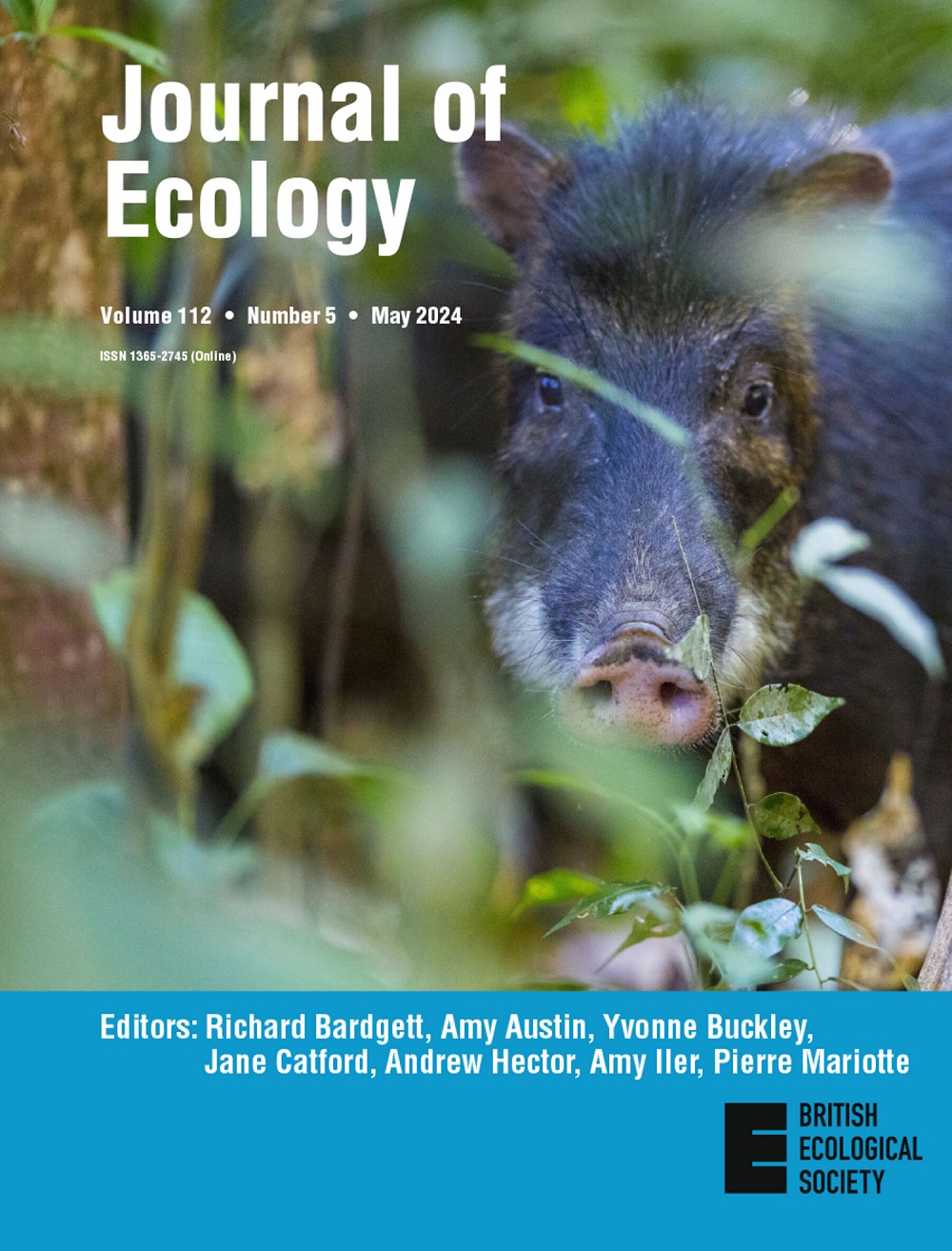Reconciling plant and microbial ecological strategies to elucidate cover crop effects on soil carbon and nitrogen cycling
IF 5.3
1区 环境科学与生态学
Q1 ECOLOGY
引用次数: 0
Abstract

协调植物和微生物生态策略,阐明覆盖作物对土壤碳氮循环的影响
植物经济学是指植物分配和利用资源的方式,它通过与根系及相关微生物群落的相互作用影响多种土壤过程。然而,人们对植物经济学和微生物生态策略之间的相互作用仍然知之甚少,而这对于综合操纵植物和微生物介导的功能以减缓气候变化和维持土壤健康至关重要。我们利用在同一基质土壤中单一种植 11 种覆盖作物的田间试验来检验微生物生态策略是否与植物经济策略相关,以及它们之间的相互作用是否与土壤功能相关。对根系和叶片的性状进行了主成分分析(PCA),以确定覆盖作物物种在植物性状空间的负载。对根圈微生物群落进行了元基因组分析,以根据基因编码的群落聚集性状推断它们的生态策略。我们发现,植物经济策略的保护梯度与微生物生态策略的权衡之间存在同步关系。保守的植物策略者,如多花睡莲(Lolium multiflorum)、瘤胃小麦(Triticum turgidum)和芸苔属(Brassica juncea),培育了以高生长产量潜力(Y-策略)为特征的微生物群落。这包括增加微生物碳固定途径、柠檬酸循环、核糖体以及缬氨酸、亮氨酸和异亮氨酸的生物合成。因此,微生物的代谢效率提高了,表现为微生物生物量碳含量增加,代谢商数(qCO2)降低,导致土壤有机碳积累增加。相比之下,黄芪、紫云英、三叶草和美智子等获取性植物刺激了微生物的资源获取策略(A-策略)。这包括增强细菌趋化、分泌系统、生物素代谢和细胞运动途径,进而提高土壤外酶活性,加速土壤氮矿化。因此,这些物种提高了土壤氮的可用性,并对随后的主要作物产量产生了巨大的反馈作用。综述。本研究证明了植物经济战略如何影响不同微生物生态战略之间的平衡,特别是 Y 战略和 A 战略之间的权衡。这些相互作用控制着土壤生态系统中的碳和氮动态。这些发现为实施基于自然的解决方案以改善农业生态系统管理实践提供了启示。
本文章由计算机程序翻译,如有差异,请以英文原文为准。
求助全文
约1分钟内获得全文
求助全文
来源期刊

Journal of Ecology
环境科学-生态学
CiteScore
10.90
自引率
5.50%
发文量
207
审稿时长
3.0 months
期刊介绍:
Journal of Ecology publishes original research papers on all aspects of the ecology of plants (including algae), in both aquatic and terrestrial ecosystems. We do not publish papers concerned solely with cultivated plants and agricultural ecosystems. Studies of plant communities, populations or individual species are accepted, as well as studies of the interactions between plants and animals, fungi or bacteria, providing they focus on the ecology of the plants.
We aim to bring important work using any ecological approach (including molecular techniques) to a wide international audience and therefore only publish papers with strong and ecological messages that advance our understanding of ecological principles.
 求助内容:
求助内容: 应助结果提醒方式:
应助结果提醒方式:


